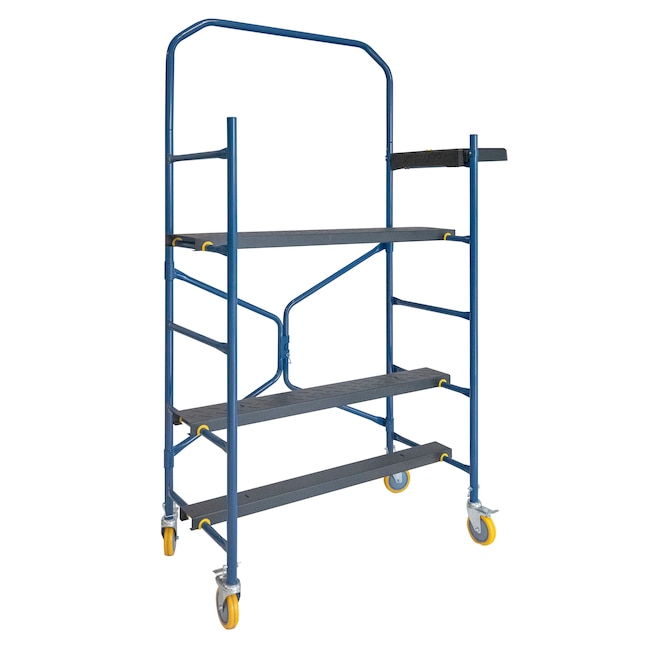Temporary Roof Scaffolding for Your Construction or Renovation Project
Temporary Roof Scaffolding for Your Construction or Renovation Project
Blog Article
Exploring the Numerous Sorts Of Scaffolding Made Use Of in Construction Jobs
The building and construction sector depends greatly on numerous types of scaffolding to meet details job demands, each offering distinctive advantages and applications. Standard structure scaffolding offers a strong foundation for basic tasks, while put on hold scaffolding is crucial for work on high-rise structures.

Conventional Frame Scaffolding
Conventional frame scaffolding is just one of one of the most extensively used methods in the building sector due to its toughness and flexibility. This system includes horizontal and vertical frameworks that are put together to produce a secure platform for materials and employees. The primary components consist of vertical posts, horizontal ledgers, and angled dental braces, which together supply a strong framework that can support substantial loads.
One of the crucial benefits of conventional framework scaffolding is its adaptability to different building and construction projects, varying from property buildings to huge industrial structures. The modular layout enables for very easy assembly and disassembly, making it reliable for both temporary and long-term jobs. Furthermore, the system can be personalized in height and size, accommodating various building layouts and site problems.
Safety and security is critical in scaffolding applications, and conventional structure systems are outfitted with guardrails and toe boards to protect against falls and guarantee worker protection. Routine evaluations and adherence to security regulations are critical in keeping the integrity of the scaffold (Scaffolding). In general, traditional framework scaffolding stays a basic selection in the building and construction industry, supplying a dependable platform for labor and improving general job performance

Suspended Scaffolding
Put on hold scaffolding provides an unique remedy for building tasks that call for accessibility to elevated surface areas, specifically in scenarios where conventional structure scaffolding may be impractical. This type of scaffolding is typically suspended from the roofing system or top degrees of a framework, utilizing a system of ropes, pulley-blocks, and platforms to develop a working space that can be changed to various elevations.
Among the main benefits of suspended scaffolding is its flexibility. It can be conveniently repositioned or reduced to suit adjustments in construction requirements, making it perfect for jobs such as home window installation, façade work, and maintenance on high-rise buildings. In addition, the very little impact of suspended scaffolding enables much better use of ground space in urban atmospheres, where area is frequently limited.
Security is a vital consideration in the usage of suspended scaffolding. Proper rigging and securing systems have to be employed to guarantee stability and prevent accidents. Operators has to also be learnt the risk-free use this devices. On the whole, suspended scaffolding offers a effective and effective solution for accessing hard-to-reach areas in numerous building and construction circumstances, enhancing both performance and safety and security on site.
System Scaffolding
System useful site scaffolding, often considered a modern-day service in the scaffolding sector, contains pre-engineered components that can be rapidly assembled and adjusted for various building tasks. Scaffolding. This sort of scaffolding is identified by its modular design, which permits convenience and performance on work websites, suiting structural needs and different heights
Generally made from high-strength steel or aluminum, system scaffolding supplies boosted sturdiness and security. The elements consist of upright blog posts, horizontal journals, and diagonal dental braces, which adjoin safely, making sure a robust framework. The layout usually includes standard installations, streamlining assembly and disassembly procedures, consequently minimizing labor time and expenses.

Rolling Scaffolding
Moving scaffolding is a functional option to conventional set scaffolding, developed for mobility and convenience of usage on construction websites. This sort of scaffolding includes a platform sustained by frameworks with wheels, permitting employees to conveniently relocate it as needed. The wheelchair attribute dramatically enhances productivity, as it decreases downtime related to assembling and taking apart dealt with scaffolding.
Typically built from lightweight products such as aluminum or steel, rolling scaffolding supplies a strong yet mobile option for projects calling for regular repositioning - Scaffolding. It is especially useful in tasks such as paint, drywall setup, and electric work, where accessibility to various elevations and check these guys out locations is necessary
Security is vital in rolling scaffolding style, with attributes such as securing wheels to protect against unintended movement when in operation, and guardrails to safeguard employees from falls. Additionally, many models are flexible in elevation, suiting various job requirements.
Cantilever Scaffolding

The style of cantilever scaffolding usually involves utilizing arms or braces secured to a building or structure, allowing the system to expand exterior securely. Security is vital; therefore, these scaffolds must be crafted to endure various loads and ecological problems. Regular evaluation and maintenance are necessary to ensure structural honesty and employee safety and security.
Cantilever scaffolding is favored for its adaptability and efficient usage of room, making it a preferred option in metropolitan settings where room restrictions are common. It promotes simpler access to high altitudes, eventually adding to the general efficiency of building and construction projects. As with all scaffolding kinds, appropriate training and adherence to security criteria are crucial for employees using cantilever scaffolding.
Conclusion
Conventional framework scaffolding gives stability, while put on hold scaffolding offers convenience for elevated tasks. System scaffolding facilitates quick assembly, and rolling scaffolding boosts flexibility for differing work atmospheres.
Typical framework scaffolding gives a strong foundation for basic jobs, while suspended scaffolding is necessary for work on skyscraper structures.Rolling scaffolding is a flexible alternative to traditional fixed scaffolding, developed for movement and ease of usage on building websites. As with all scaffolding types, appropriate training and adherence to safety and security requirements are essential for employees making use of cantilever scaffolding.
Conventional structure scaffolding provides security, while suspended scaffolding offers convenience for elevated tasks. System scaffolding helps with quick setting up, and rolling scaffolding improves flexibility for varying job atmospheres.
Report this page